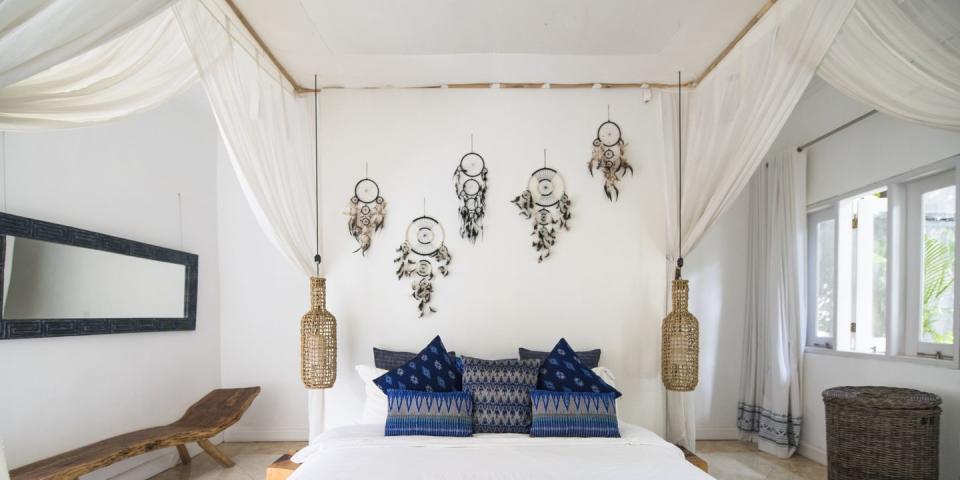Is There a Respectful Way to Decorate With Native American Decor?

Note: The author is a Lakota journalist drawing from personal experience and knowledge. As such, most examples in this piece will center around Native American experiences and sources.
Over the past few years, as I've become an adult with my own home to decorate, I've come to notice the immense amount of "Native American" decor on home design sites and blogs. Whether that's the result of an uptick in popularity or my own recognition of these items, the bottom line is, there's no shortage of these themes: I’ve seen everything from “Indian” costumes for your chihuahua to “Navajo print” underwear to kid-sized tipis.
There are some glaring issues with several of these examples. Thankfully, it’s becoming more and more recognized that dressing up (either a human or an animal) as another culture is downright offensive. And a 2012 lawsuit between the Navajo Nation and Urban Outfitters set forth an unprecedented example that tribal names and cultural patterns are, in fact, subject to copyright law.
But what about those tipis? Dreamcatchers? Some of these motifs have become so common in home decor that I daresay most don’t even register their origins—or what that lack of awareness might mean.
Tipis, for example, could very well be considered “just” tents. What’s the harm in that? Well, as Adrienne Keene from the blog Native Appropriations puts it, “My problem is that the tipis I see and the discussions around them always seem to involve some level of fantasy play, you’re not just hanging out in a tent that looks like a tipi.”
In other words, playing "cowboys and Indians" is harmful to actual Native peoples. It reduces thousands of different cultures into one giant stereotype, often accompanied with myths and folklore rather than actual facts. More times than I can count, I’ve been asked if I live in a tipi when people find out that I’m Native American. Yes, even in 2020.
And dreamcatchers are no different: The legend and fantasy that surround them are rarely discussed alongside the actual history of the tribes who traditionally used them. So, what to do? Is there a way to enjoy or appreciate these items without harming Native people?
In a word: educate. Don’t only learn about the tribes that used tipis (it's not all of them!) but learn about how we used them. It’s really quite fascinating to learn how they are made, erected, and used. No, we don’t live in tipis anymore, but we do use them during religious ceremonies. And sometimes we just like to enjoy participating in activities the same way our ancestors did, because it helps us feel close to them—just like making your great-grandmother’s Christmas fudge helps you feel close to her.
And did you know that the Indigenous Sámi people of Northern Europe used similar structures, called lavvu? Maybe you didn’t realize Europe even had Indigenous people?
Another big part of the issue here is asking yourself who is profiting from selling these items to the general public. Are you purchasing a dreamcatcher from a Native American, or are you buying something from a mass-produced brand that will reap profits from something it did not invent? If you want to buy Native American art for your home, ensure that it is authentic and that you are paying a fair price for that person’s time, craftsmanship, and effort.
Often, we think that celebrating or appreciating another culture is simply visual—we think “Oh, that’s so pretty!” and, like little magpies, we want it. What we don’t realize is that these things have an equally beautiful history and meaning, and learning about and genuinely valuing those histories makes it all the more special.
Follow House Beautiful on Instagram.
You Might Also Like

